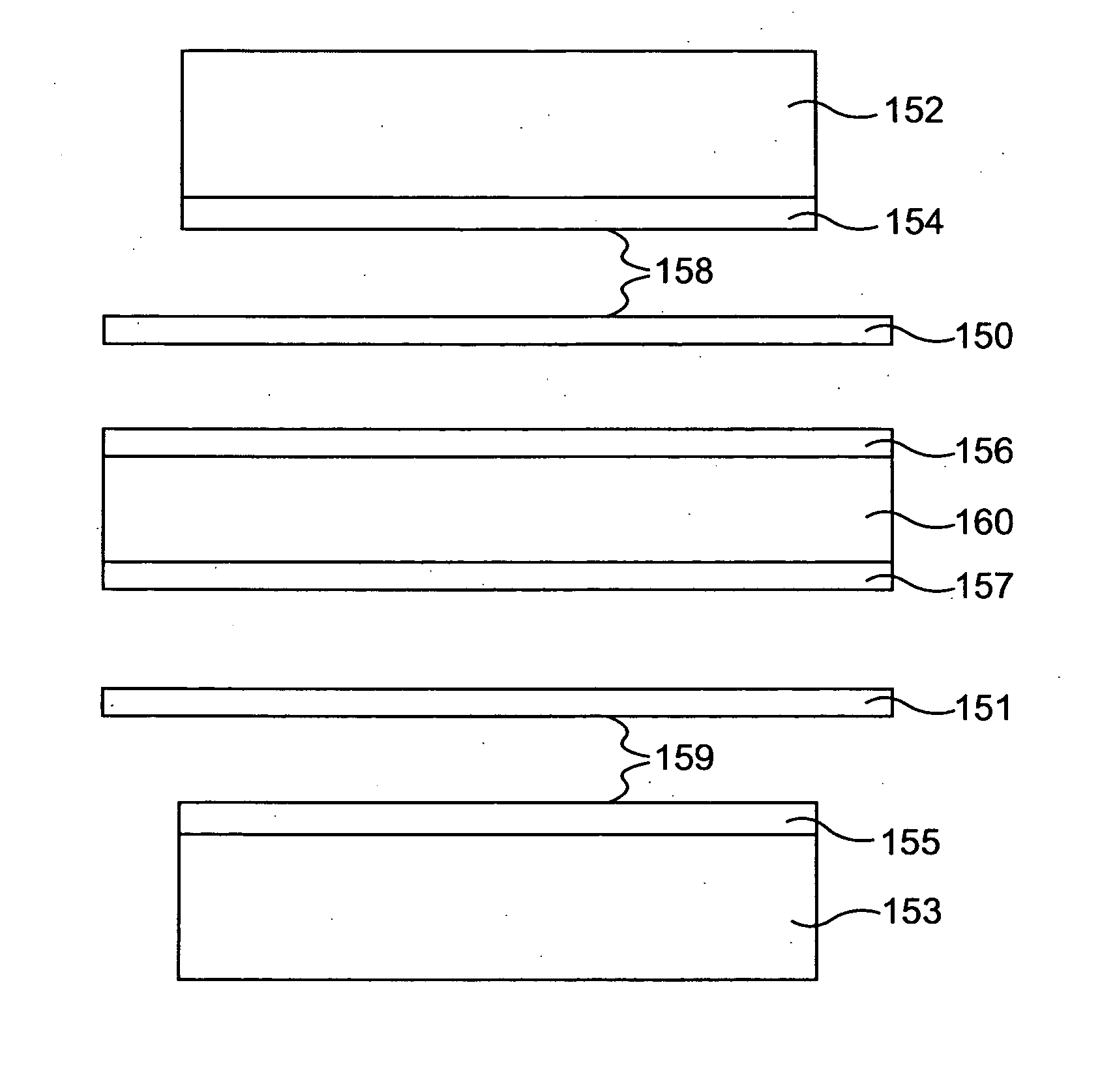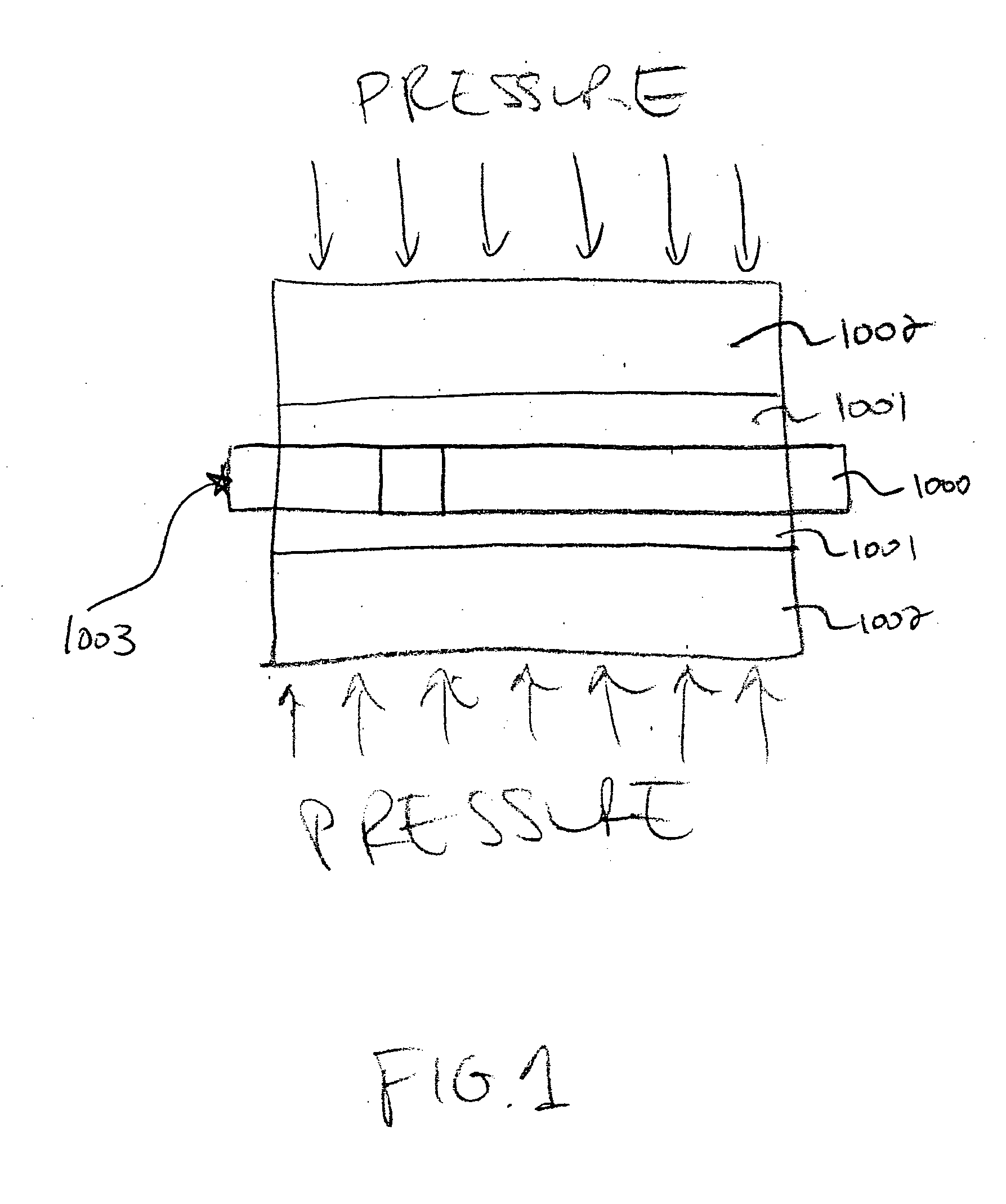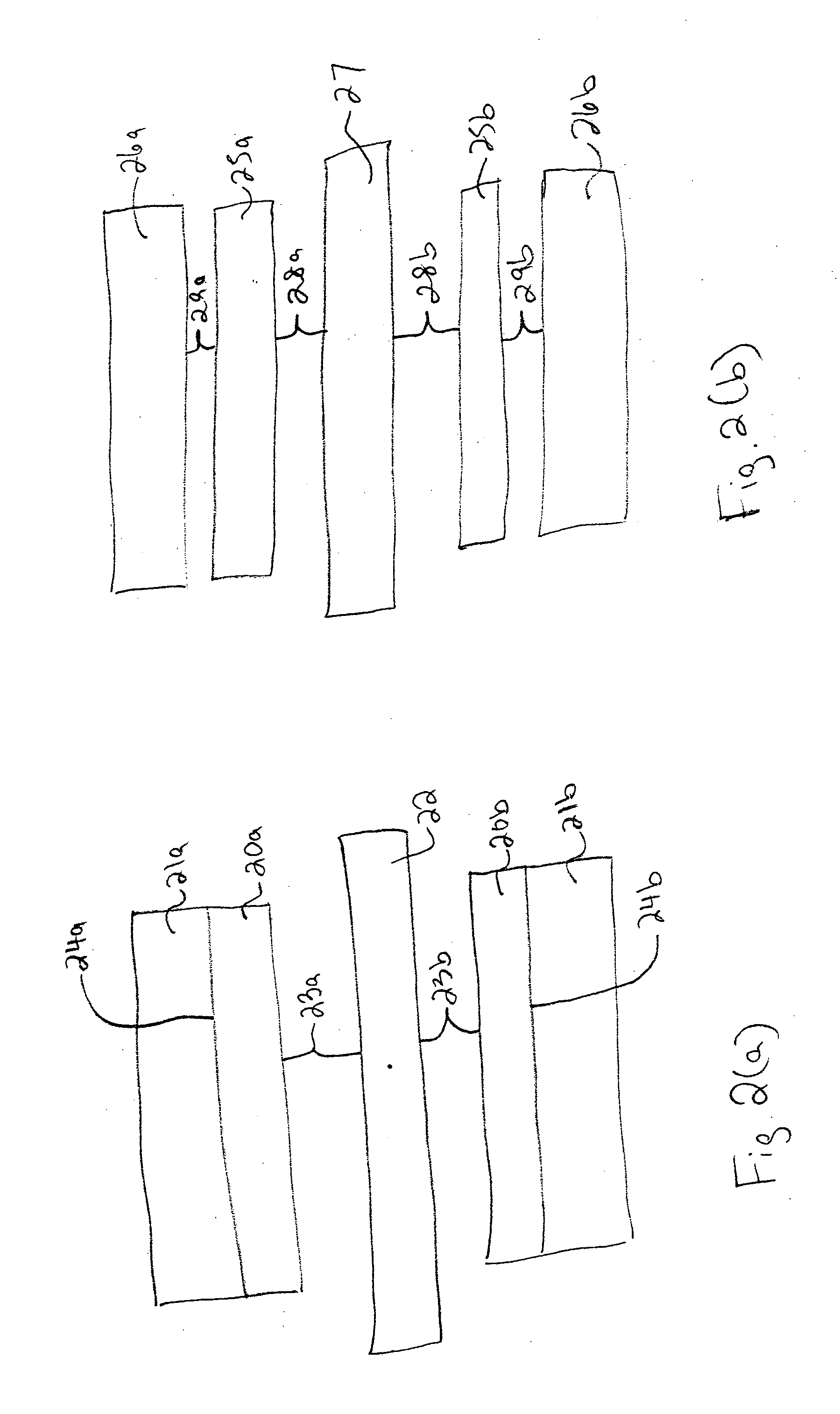Method of controlling thermal waves in reactive multilayer joining and resulting product
- Summary
- Abstract
- Description
- Claims
- Application Information
AI Technical Summary
Benefits of technology
Problems solved by technology
Method used
Image
Examples
Embodiment Construction
[0003] 1. Field of the Invention
[0004] The invention is directed toward methods of selecting components for a reactive joining process and their respective configurations based on simulated data so as to produce a joint with desired properties. The invention is also directed towards joints produced by implementing such methods.
[0005] 2. Background of the Invention
[0006] Reactive multilayer joining is a particularly advantageous process for soldering, brazing or welding materials. A typical reactive multilayer joining process is schematically illustrated in FIG. 1. This room-temperature bonding process is based on sandwiching under pressure a reactive multilayer foil 1000 between two layers of a fusible material 1001 and the two components 1002 to be joined, and then igniting the foil 1000, for example, using a spark 1003. A self-propagating reaction is thus initiated which results in a rapid rise in the temperature of the reactive foil 1000. The heat released by the reaction melt...
PUM
| Property | Measurement | Unit |
|---|---|---|
| Temperature | aaaaa | aaaaa |
| Length | aaaaa | aaaaa |
| Thickness | aaaaa | aaaaa |
Abstract
Description
Claims
Application Information
 Login to View More
Login to View More - R&D
- Intellectual Property
- Life Sciences
- Materials
- Tech Scout
- Unparalleled Data Quality
- Higher Quality Content
- 60% Fewer Hallucinations
Browse by: Latest US Patents, China's latest patents, Technical Efficacy Thesaurus, Application Domain, Technology Topic, Popular Technical Reports.
© 2025 PatSnap. All rights reserved.Legal|Privacy policy|Modern Slavery Act Transparency Statement|Sitemap|About US| Contact US: help@patsnap.com



